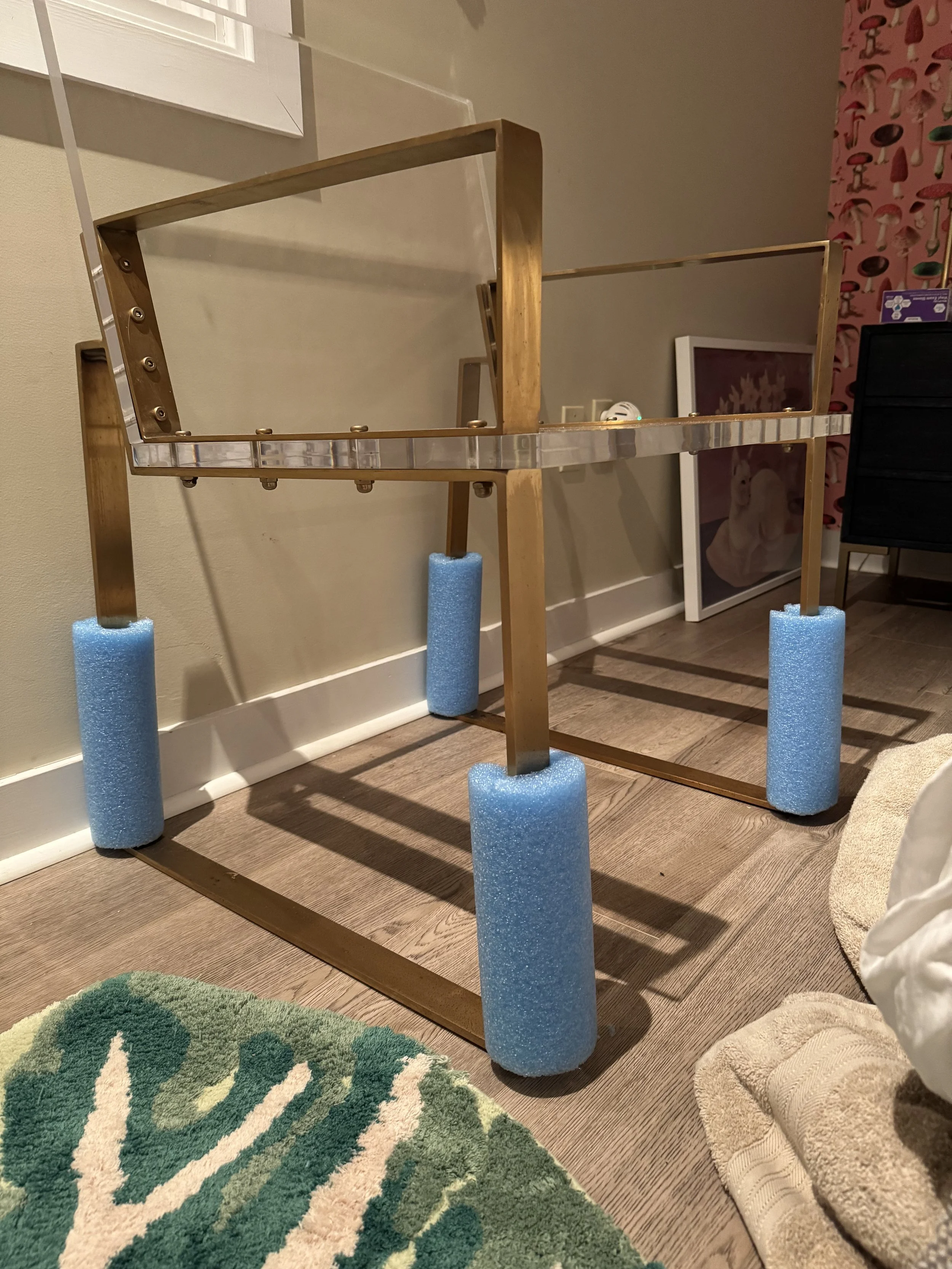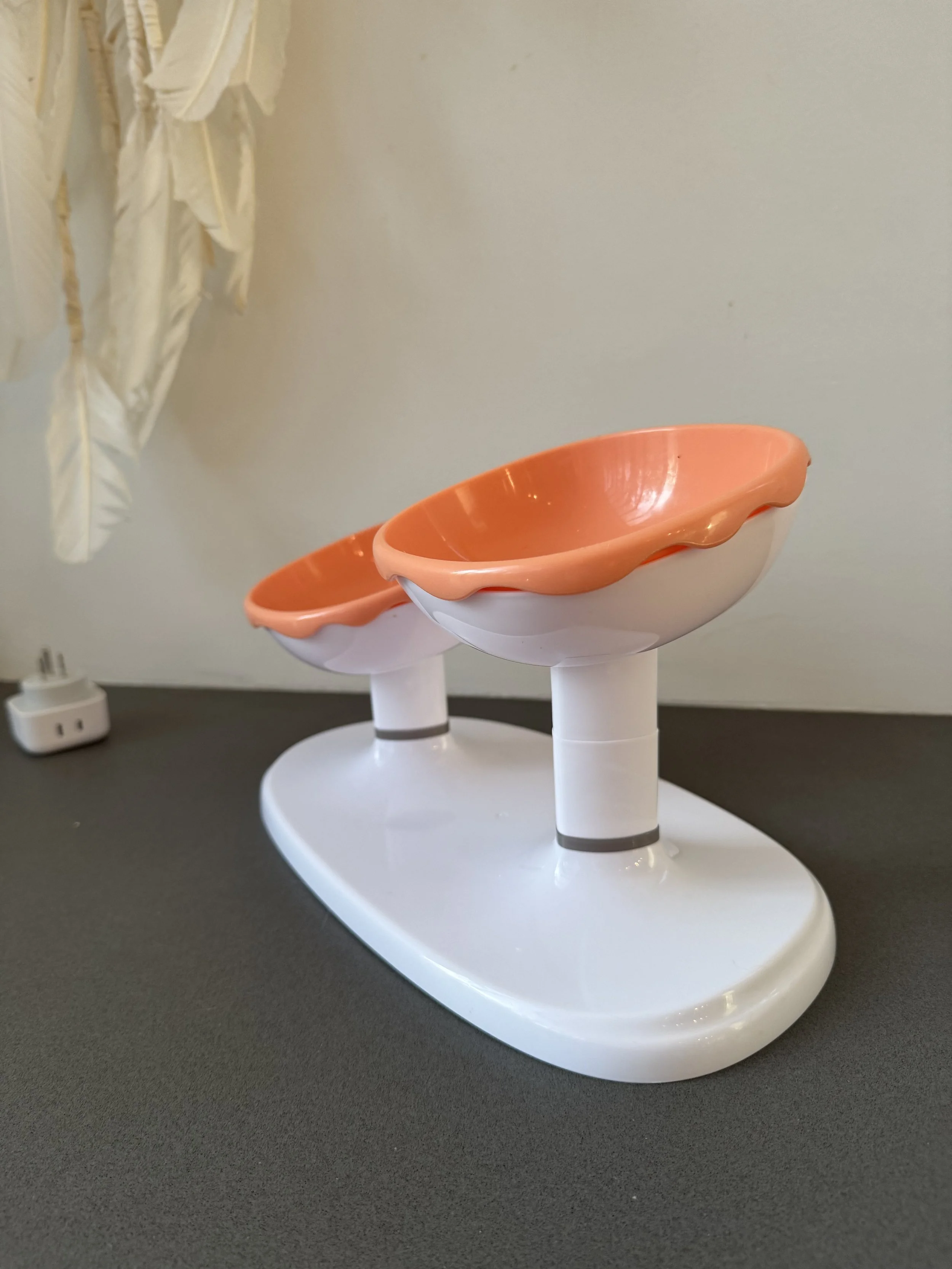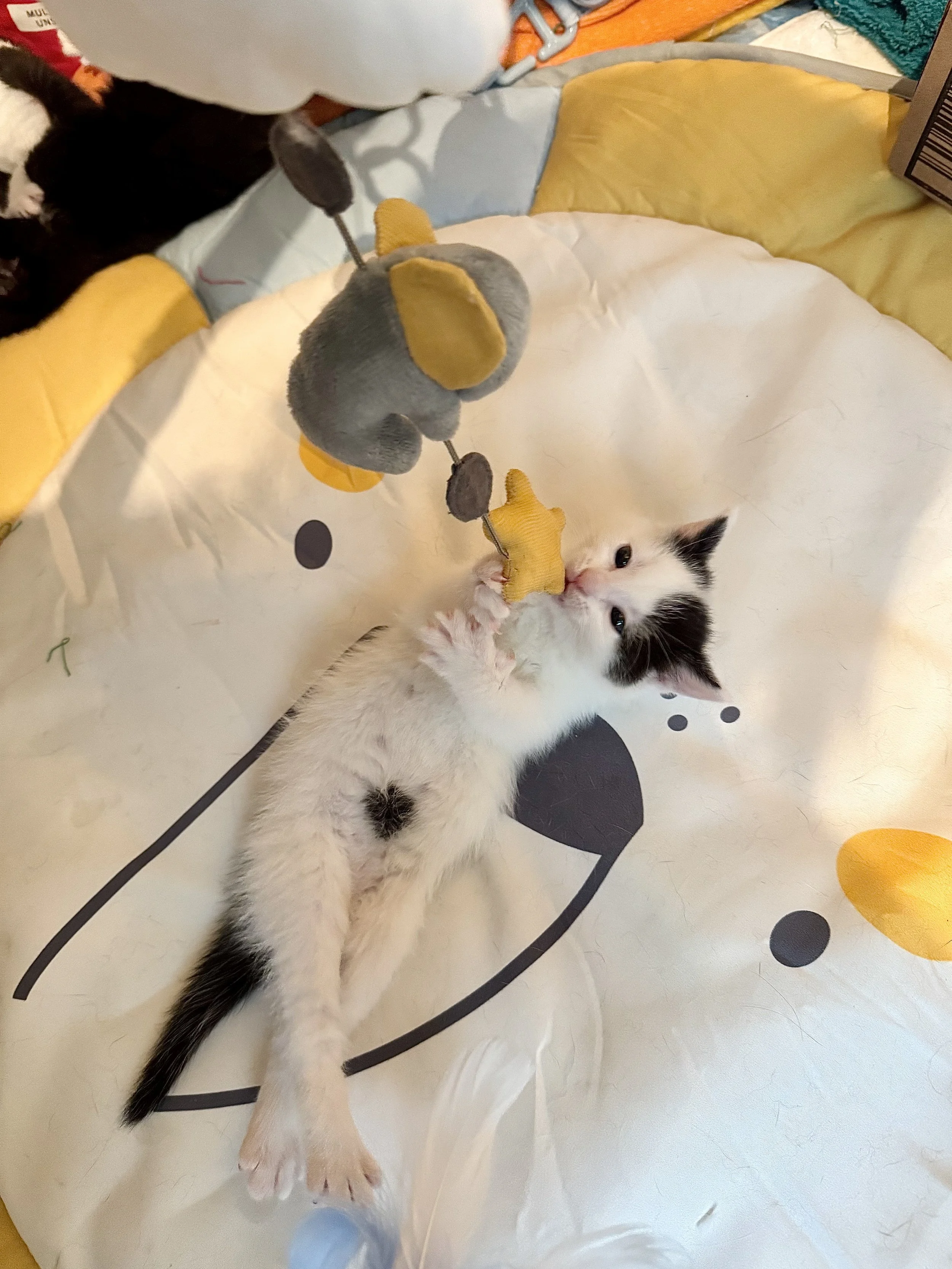How you can help raise a cat or kitten with cerebellar hypoplasia!
Cerebellar hypoplasia, often called wobbly cat syndrome, sounds intimidating until you understand what’s actually going on in the brain. The cerebellum is the body’s motion editor; it doesn’t start movement, it perfects it. When a kitten’s cerebellum is underdeveloped—most commonly due to exposure to feline panleukopenia in utero or shortly after birth—movements lose their smoothness and timing. The result can look dramatic: wide-based stances, intention tremors, unsteady steps and the occasional full-body spin as the cat tries to move forward. Yet beneath that wobble is a perfectly bright, social cat whose cortex still initiates motion and whose mood and comfort are intact. Crucially, CH is non-progressive; it doesn’t worsen with age. That single fact reshapes how we plan care, because time, strength, and smart environments can unlock real gains.
Understanding the spectrum matters. Earlier this year we took in a feral mom cat and her 3 babies on the day that she gave birth. The babies seemed fine until it was time to walk, and then one of the babies had trouble. Her name is Egg, and she couldn’t stand or walk without falling over immediately!
Some cats can’t stand or feed themselves without help, while others walk, jump and play with only mild tremors. Because imaging like MRI is rare for kittens, most diagnoses are observational: persistent wobble beyond the normal kitten learning phase, a triangular stance, and tremors that don’t fade as littermates stabilize. We took Egg to a neurologist, and he told us that ruling out other causes—vestibular disease, toxoplasmosis, trauma, hypoxia, storage diseases—comes from pattern recognition and history. CH’s hallmark is constancy over time rather than decline. The key for caregivers is to match support to severity. Cats who cannot stand need assisted feeding, hygiene, and structured positioning so they can build strength safely. Milder cases still benefit from traction, predictable layouts, and lower-risk landing zones that let them explore without injury or frustration. Below you can see a bunch of photos of how we padded furniture so that Egg could safely move around without hurting herself, as well as the walkway and litter setup that I build for her.
Physical therapy for CH cats is part science, part play. Think balance training, not boot camp. Core stability grows when we give a cat the chance to bear weight and practice micro-corrections. Simple troughs—two padded rails set shoulder-width apart—let kittens stand and then take assisted steps without toppling (see photos below!). As they grow, widen the rails with them. Add passive range-of-motion for limbs to maintain flexibility, then progress to short, high-value play sessions that encourage controlled reaches and steps. Elevated, angled bowls reduce neck flexing and head bobbing at meals; consistent bowl height keeps feeding calm and cleaner (a placemat also comes in handy here). Harness curiosity with safe targets—dangly toys overhead like a baby playmat—so they engage their core from supine positions and learn to coordinate paws with intention. Some caregivers find gentle stabilization by holding the base of the tail helps a kitten practice standing, but keep it supportive rather than pulling.
Home design is the unsung hero. Smooth floors sabotage traction and confidence, so lay foam interlocking tiles or runners across traffic lanes and around resources like water, beds, and litter. Keep nails a touch longer for grip on soft surfaces; cats with CH use their claws to anchor and rise. Pad edges and collision zones with pool noodles or dense foam where fast entries end in wobbly stops. Build predictable pathways: rails along walls, low platforms with grippy surfaces, and generous landing pads under beds and sofas. Litter boxes should be accessible at floor level with deep front cut-outs, stable sides for bracing, and mats with a lip to contain enthusiastic digging (see photos below). Many cats can and do graduate to standard boxes; the point is to scaffold independence. Expect mess and plan for it—washable covers, extra mats, and quick-swap tiles keep the home livable without constant stress.
A common fear is that CH limits joy or social growth. It doesn’t. Socialization works the same way as with any kitten: frequent gentle handling, positive exposure to sounds, short meet-and-greets with other animals, and predictable routines. Because CH doesn’t hurt, these cats often brim with confidence once they find traction and pathways that work for their bodies. Caregivers frequently report extraordinary bonds, perhaps because the daily micro-wins are so visible: the first stable stand, the first self-feeding session, the first triumphant jump-and-flop exit from a litter box. Whether the heightened affection is neurobiology or nurtured closeness doesn’t matter to the cat; what matters is consistent, compassionate structure that makes exploration safe. Communities on Facebook, Reddit, and rescue networks share blueprints, gear tips, and local vet recommendations, turning trial-and-error into shared craft. With a little ingenuity and patience, wobbly becomes willful, and care becomes a celebration of small, repeatable victories.
Egg is now 7 months old and after months of PT and OT, she is able to walk and even run really well! She is super independent and strong - she’s a real light and amazing addition to our household - yes, Egg became the 14th feline member of our house. We are so happy to have been able to watch her learn and grow and look forward to a long life with this very special lady!
We used pool noodles to pad furniture legs for Egg’s safety
A great slated bowl set I found that allowed us to adjust height as Egg grew!
Egg enjoying her baby play mat while strengthening her core!



